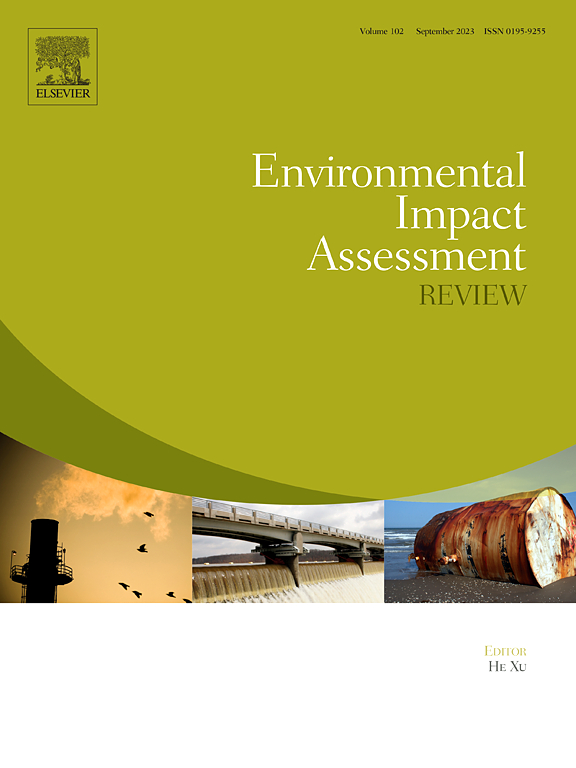使用经济方法评估基于地球观测的服务的影响:为什么以及如何?
IF 9.8
1区 社会学
Q1 ENVIRONMENTAL STUDIES
引用次数: 0
摘要
地球观测(EO)在促进科学认识和为环境监测、风险管理和资源分配决策提供关键数据方面日益得到认可。然而,以eoc为基础的服务的社会和经济影响,特别是在国际发展范围内的影响,在很大程度上仍未得到探索。本文通过提出经济方法来评估EO服务在五个关键领域的影响,解决了这一差距:农业和粮食安全、水安全、生态系统和碳管理、天气和气候适应能力,以及空气质量和健康。由NASA资助的美国政府项目SERVIR的案例研究1演示了用于评估eo驱动工具的直接和间接经济影响的方法。研究结果强调了将影响评估纳入环境评估服务的价值,使决策者能够更好地分配资源,制定可持续政策,并最大限度地提高社会效益。这种整合不仅是有价值的,而且是必不可少的,它将地球物理EO项目与经济评估联系起来,以实现更有效、更明智的决策。这项任务的紧迫性和重要性怎么强调都不过分。本文章由计算机程序翻译,如有差异,请以英文原文为准。

Using economic methods to assess impacts of earth observation-based services: Why and how?
Earth Observations (EO) are increasingly recognized for advancing scientific understanding and providing critical data for decision-making in environmental monitoring, risk management, and resource allocation. Yet, the social and economic impacts of EO-based services, particularly in the international development context, are still largely unexplored. This paper addresses this gap by presenting economic methods for assessing the impact of EO services across five key areas: agriculture and food security, water security, ecosystem and carbon management, weather and climate resilience, and air quality and health. Case studies from SERVIR, a U.S. Government program funded through NASA,1 demonstrate the methods used to evaluate both direct and indirect economic impacts of EO-driven tools. Findings highlight the value of incorporating impact assessments into EO services, enabling policymakers to allocate resources better, shape sustainable policies, and maximize societal benefits. This integration is not only valuable but essential, bridging geophysical EO projects with economic assessments for more effective, informed decision-making. The urgency and importance of this task cannot be overstated.
求助全文
通过发布文献求助,成功后即可免费获取论文全文。
去求助
来源期刊

Environmental Impact Assessment Review
ENVIRONMENTAL STUDIES-
CiteScore
12.60
自引率
10.10%
发文量
200
审稿时长
33 days
期刊介绍:
Environmental Impact Assessment Review is an interdisciplinary journal that serves a global audience of practitioners, policymakers, and academics involved in assessing the environmental impact of policies, projects, processes, and products. The journal focuses on innovative theory and practice in environmental impact assessment (EIA). Papers are expected to present innovative ideas, be topical, and coherent. The journal emphasizes concepts, methods, techniques, approaches, and systems related to EIA theory and practice.
 求助内容:
求助内容: 应助结果提醒方式:
应助结果提醒方式:


